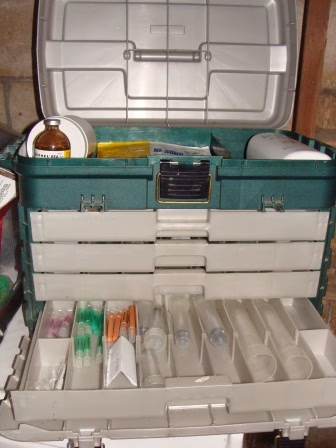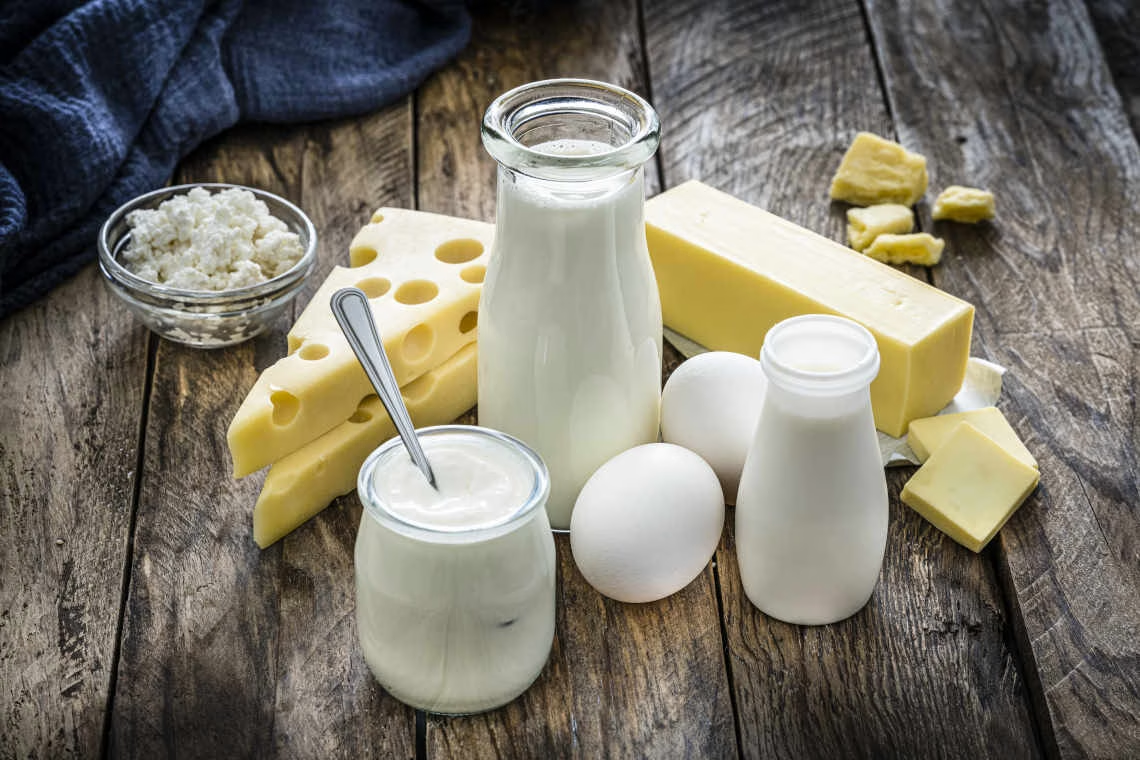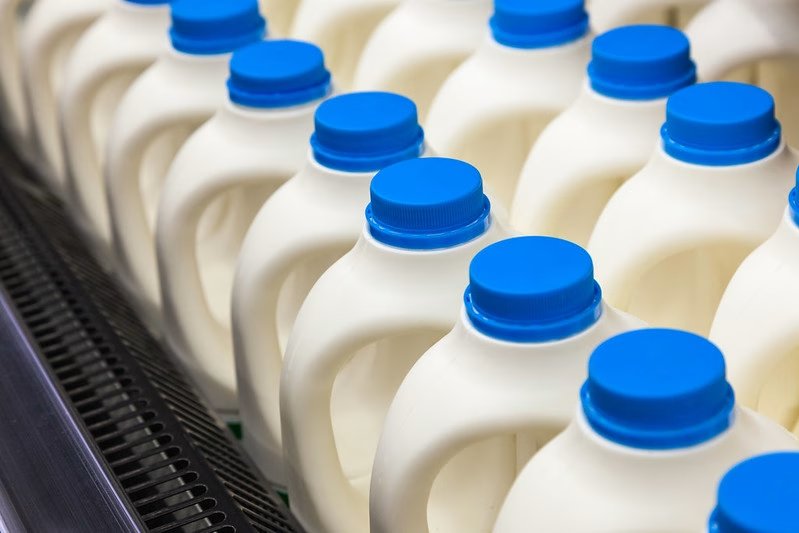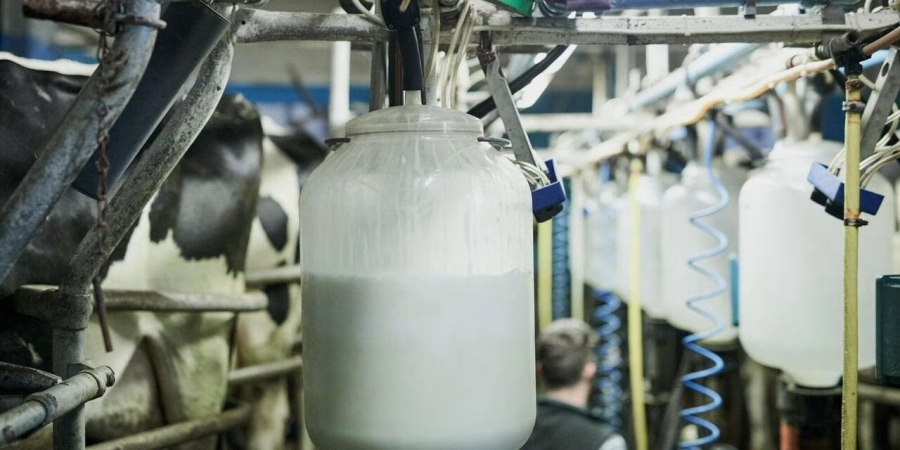Facing veterinary medicine shortages for your dairy cattle? Discover essential tips to manage supply issues and ensure your herd’s health with expert advice.

Imagine standing in your supply room, ready to do herd health checks, only to discover empty shelves. This circumstance is becoming prevalent among dairy cow farmers. Veterinary medication shortages influence dairy herd health and production, with factors such as manufacturing troubles, distribution interruptions, ingredient scarcity, and transit cold chain failures to blame.
These interruptions underscore the need to develop solid and proactive connections with veterinarians to guarantee that animal health supplies are accessible when required. Almost all of the top 40 cattle production products have experienced shortages in the last five years, and this trend is expected to continue.
Dairy producers rely heavily on herd health to make ends meet. Unpredictability in supply may cause serious problems, such as disease outbreaks and lost production. By remaining educated and working closely with their vets, dairy producers may better handle these shortages and keep their herds healthy and productive.
Unpacking the Complex Causes Behind Veterinary Medicine Shortages
Veterinary drug shortages have far-reaching consequences, frequently originating from complex supply chain challenges. Manufacturing and batch failures are common causes that may disrupt production lines and postpone the supply of critical items. These interruptions, caused by equipment failures or quality control concerns, greatly restrict the continuous supply of medical supplies.
Furthermore, distribution disruptions are crucial. Transportation strikes, natural catastrophes, and geopolitical conflicts may all disrupt product delivery, aggravating the shortage of critical pharmaceuticals. Another essential element is the scarcity of ingredients. Some active pharmaceutical compounds are acquired from a select group of worldwide sources. Economic sanctions, bad harvests, and supplier bankruptcies are all examples of supply chain disruptions that may cause widespread shortages.
Furthermore, failures in refrigeration during transportation might jeopardize the effectiveness of temperature-sensitive items. Improper handling, equipment failures, or delays expose items to improper temperatures, rendering them unfit. Issues with active components might lead to shortages. For example, an active component is urgently required in human medicine. In that case, its allocation to veterinary medicine may be deprioritized, adding to the shortage of animal health products.
The Far-Reaching Impact on Dairy Cattle Production
Veterinary medication shortages have a considerable influence on dairy cow production, reducing both health and productivity. Insufficient access to essential health items may hinder herd health, thus influencing milk output and profitability. For example, relying on a single manufacturing site for crucial materials might cause significant problems if it closes abruptly. This identifies a weakness that might exacerbate shortages.
Furthermore, prioritizing human health demands often trumps animal health, complicating the supply situation for dairy farmers. Many active compounds found in animal pharmaceuticals are equally important in human health. Human health demands take priority when there are shortages, resulting in additional cattle scarcity. While reasonable, this forces farmers to look for alternatives that are not always practicable or accessible.
Finally, frequent and unanticipated shortages of veterinary drugs impede everyday cattle management. Producers must make complex judgments regarding changing or postponing health-maintenance practices. These actions may lead to higher illness occurrences, reduced milk output, and substantial financial pressure.
Proactive Measures in Managing Veterinary Medicine Shortages for Dairy Cattle Producers
Proactive approaches are critical for addressing veterinary drug shortages in dairy cow production. Producers must establish excellent working connections with veterinarians, who may advise on alternate treatments and product availability. Maintaining a supply of necessary medications and preserving them correctly is crucial. Monitoring expiration dates ensures that medications are utilized successfully and replacements are obtained promptly, preventing substantial supply interruptions.
Navigating the Use of Just-Expired Veterinary Medicines
Handling expired goods is an intricate part of controlling veterinary drug shortages. It is essential to consult a veterinarian regarding the effectiveness of these treatments. While expiry progressively diminishes potency and efficacy, it only reaches zero after some time. Products that have just expired might be better than nothing. However, it is essential to note that selling outdated items is unlawful. Their usage should only be considered if you already have them and have had a comprehensive consultation with a veterinarian.
Innovative Strategies to Circumvent Veterinary Medicine Shortages
Alternative ways may significantly reduce the effect of veterinary medication shortages. Split-dosing vaccination is a common approach used in the swine business. Administering half doses to regulate restricted vaccination supply may help to save cattle during vital times. Please discuss this with your veterinarian to determine whether it applies.
Another feasible option is to examine generic or comparable products. While these alternatives may limit the supply of other related treatments, they may fill a gap during a scarcity. Ensure that these alternatives fulfill the effectiveness guidelines for your animals.
Non-specific immune stimulant medicines provide broad protection against various bacterial and viral illnesses. These medications may lessen reliance on individual vaccinations by increasing the general immune response, alleviating the strain on limited resources.
A multimodal strategy, such as split-dosing, generic alternatives, and immune stimulants, may provide realistic answers to veterinary drug shortages.
Local Pharmaceutical Interventions: A Pillar of Stability in Veterinary Medicine Supply Chains: Local pharmaceutical enterprises can help alleviate essential shortages. For example, lidocaine was rare until regional manufacturing helped the veterinary and human healthcare industries. This emphasizes the significance of local manufacturing skills in maintaining supply chains and assuring continuity in animal health management. Local pharmaceutical enterprises can help alleviate essential shortages. For example, lidocaine was rare until regional manufacturing helped the veterinary and human healthcare industries. This emphasizes the significance of local manufacturing skills in maintaining supply chains and assuring continuity in animal health management.
Human counterparts may be used as interim treatments when veterinary-specific drugs are unavailable. While rules and quantities vary, they may give temporary relief. The pharmaceutical sector may also use emergency drug releases to acquire required pharmaceuticals quickly. Producers should engage with their veterinarians to properly handle legal and safety issues during such vital times.
Optimizing Herd Health: Strategic Vaccination Adjustments and Enhanced Colostrum Management
During shortages, consider limiting the frequency of immunizations for illnesses including pinkeye, foot rot, leptospirosis, and vibriosis. While necessary, these immunizations may be spread out when supplies are limited without jeopardizing herd health. Consult with your veterinarian regularly to build a strategic immunization strategy. Improving colostrum management is another critical step. High-quality colostrum given immediately to babies increases immunity and may lessen the need for repeated immunizations. Non-specific immune stimulants may also widen immunity in the absence of particular vaccinations.
Mitigating Stressors: A Cornerstone in Reducing Dependency on Vaccines and Antimicrobials
Reducing reliance on vaccinations and antimicrobials requires minimizing stress. Stressors such as parasites, flies, lice, inadequate nutrition, high ambient temperatures, and calving may exacerbate cattle health problems, increasing disease susceptibility. Addressing these stresses may enhance herd health and reduce the need for intensive medical treatments. Implementing efficient parasite control programs, controlling flies and lice, giving specialized feed, maintaining ideal environmental conditions, and providing assistance during calving are all critical. These approaches improve herd health and contribute to long-term veterinary medication usage, allowing for more effective shortage management.
The Bottom Line
Proactive management and strategic planning are critical in veterinary medication shortages. Dairy cow farmers confront issues such as production interruptions and ingredient shortages. A solid cooperation between farmers, veterinarians, and pharmaceutical corporations is essential for preserving cattle health and production. Consistent communication with veterinarians, predicting requirements, and controlling supplies may all assist in reducing shortages. Exploring alternate goods, using creative tactics such as split-dosing, and using local pharmaceutical solutions might help mitigate supply interruptions. Optimizing herd health via vaccine changes and stress reduction may reduce reliance on restricted resources. The dairy farming community can improve its resilience to future shortages by developing solid relationships and implementing forward-thinking strategies. Integrating technology to simplify operations and pressing for improved production capacities are required. Collaboration and innovation guarantee that our cattle get the best care despite supply chain challenges.
Key Takeaways:
- Cattle producers face inconsistent supplies of essential animal health products due to varied reasons such as manufacturing failures, distribution interruptions, and ingredient unavailability.
- The need to maintain a strong relationship with veterinarians and supply companies is paramount in ensuring timely access to necessary medications.
- Proper stock management, including keeping an advance supply and ensuring correct storage conditions, can significantly buffer against shortages.
- Exploring alternative solutions, such as the use of generic products or emergency drug releases, can mitigate the impact of specific shortages.
- Reduction in vaccination frequency for certain diseases and enhancements in colostrum management can offset the lack of specific vaccines.
- Addressing stressors in livestock can decrease the reliance on vaccines and antimicrobials, promoting overall better health in the herd.
- Collaboration and mutual support within the industry are essential to navigate and overcome the unpredictability of veterinary medicine shortages.
Summary:
Veterinary medication shortages are affecting dairy cow farmers’ herd health and production, with almost all top 40 cattle production products experiencing shortages in the last five years. Factors such as manufacturing issues, distribution interruptions, ingredient scarcity, and transit cold chain failures contribute to these shortages. Unpredictability in supply can lead to serious problems, such as disease outbreaks and lost production. Complex causes include manufacturing and batch failures, distribution disruptions, ingredient scarcity, economic sanctions, bad harvests, and supplier bankruptcies. Insufficient access to essential health items may hinder herd health, affecting milk output and profitability. Proactive measures, such as establishing good working connections with veterinarians, maintaining a supply of necessary medications, and monitoring expiration dates, are critical for addressing veterinary drug shortages.














